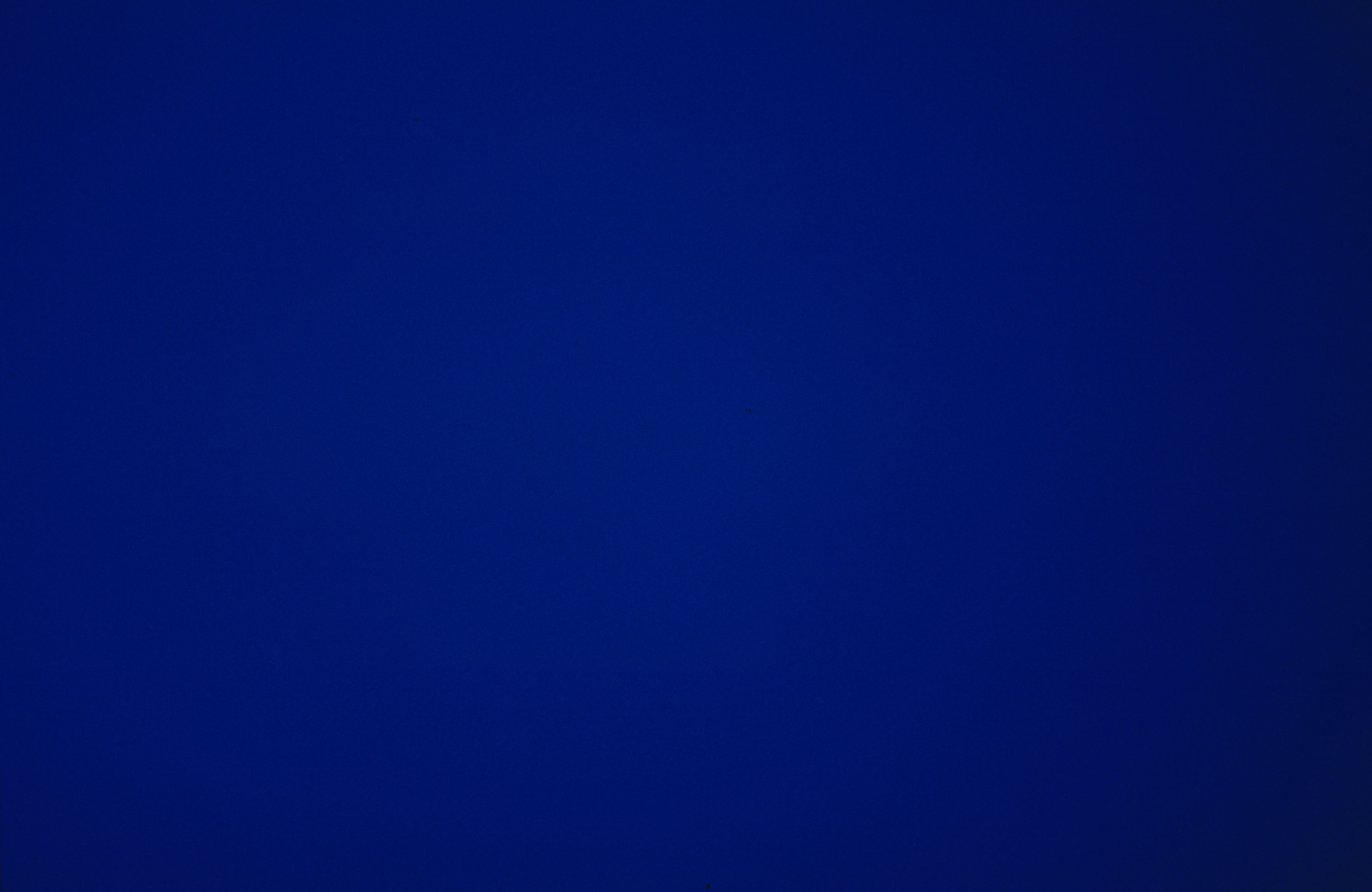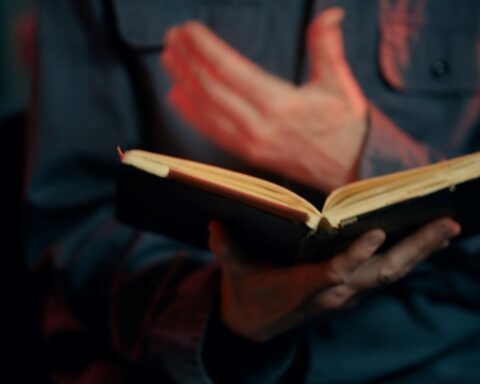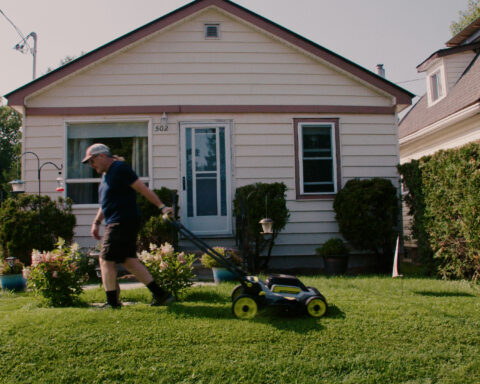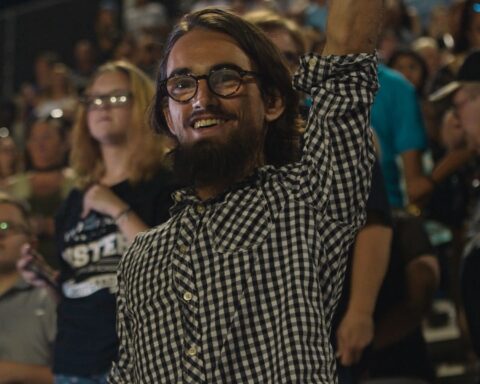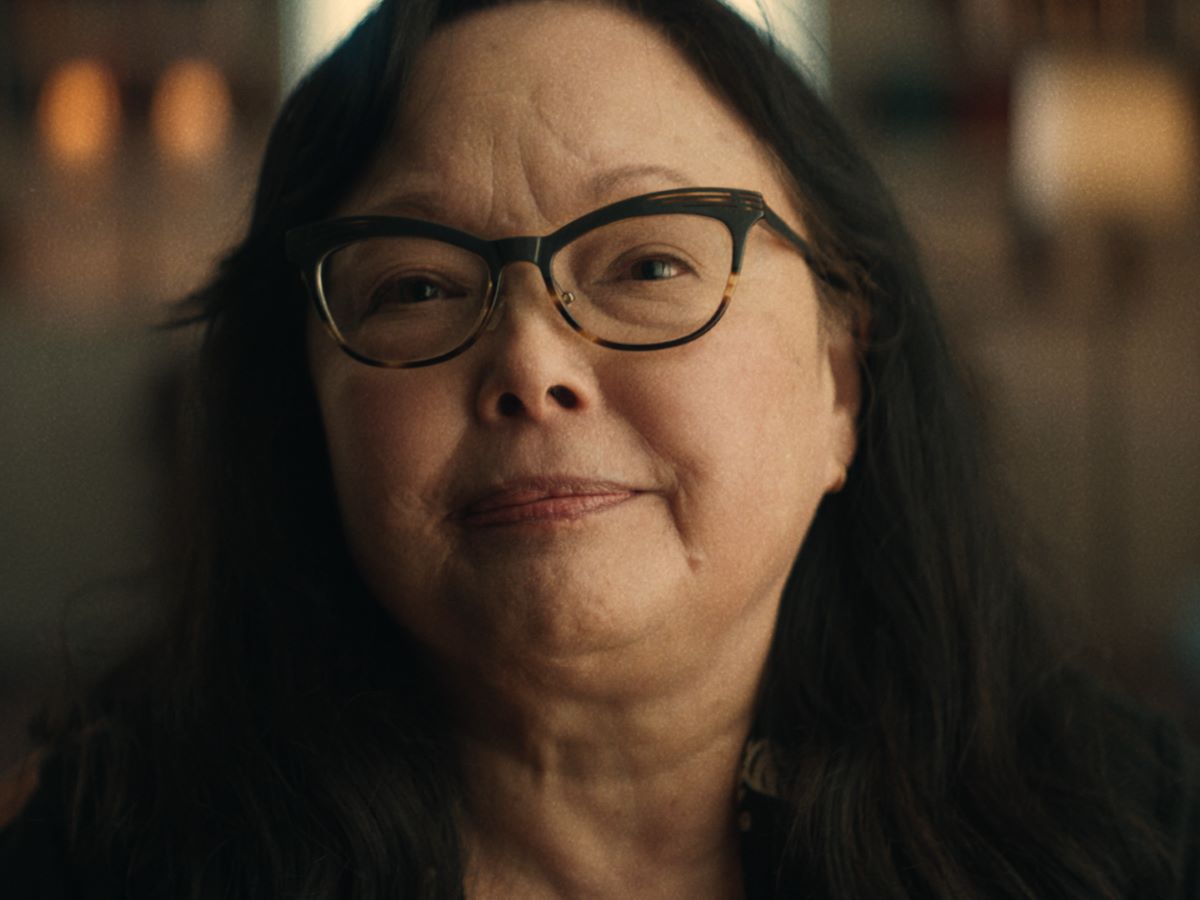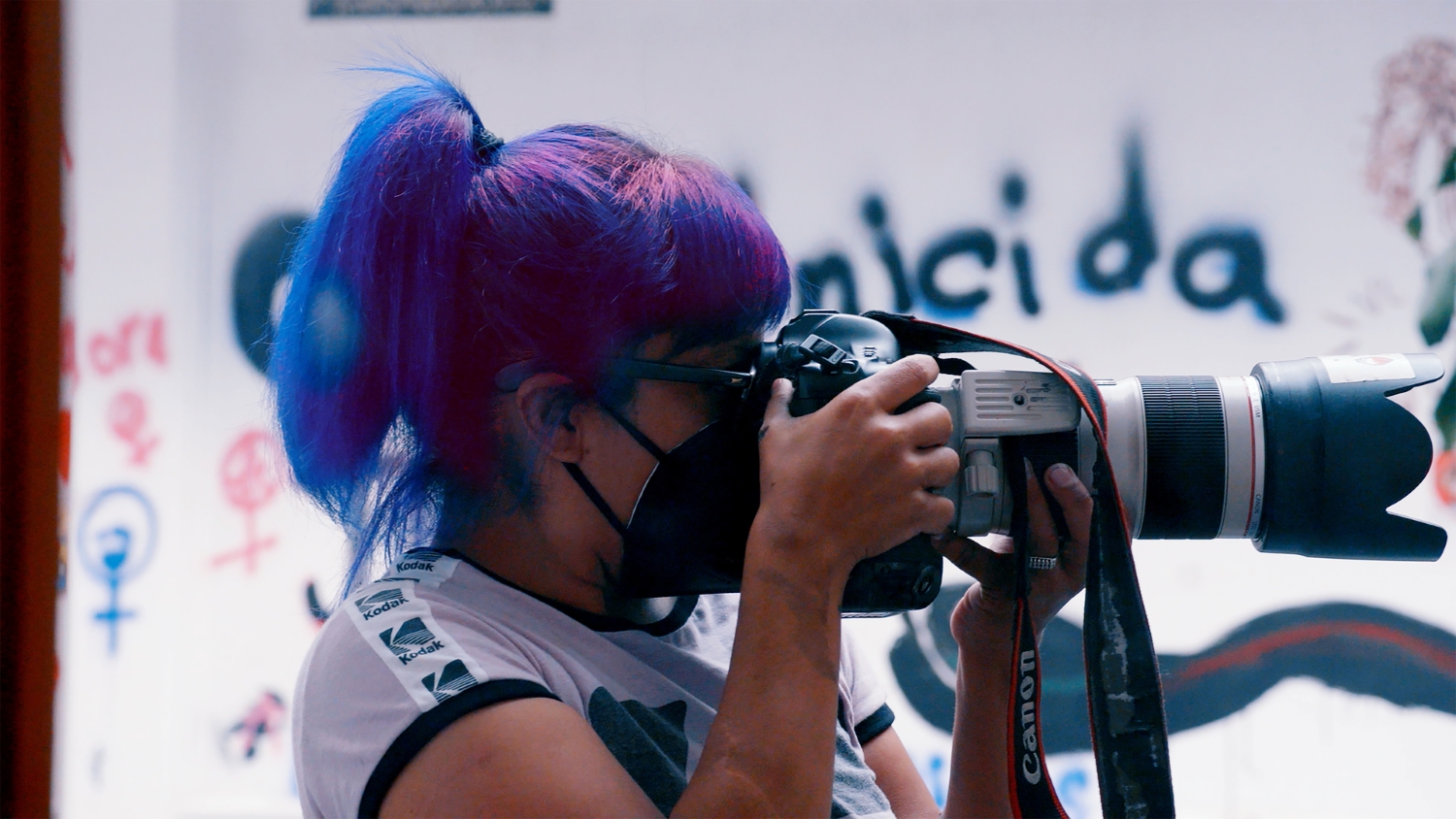When I first applied to graduate school for journalism in January 2020, I was most excited to acquire technical skills, like learning how to use a video camera, as well as audio and video editing programs to tell stories. At the time, I couldn’t foresee two major events that would drastically alter my educational journey, and, in many ways, my sense of self.
Unsurprisingly, one such event was the pandemic. Doing journalism school online, we relied on our smartphones to capture all of our visual and audio content. This was disappointing for everyone in the program who wanted a taste of what it’s like to be a professional documentarian: setting up lighting and cameras and collaborating in editing suites. Yet, in some ways, the experience we had is akin to that of more and more journalists, who are sent out into the field on their own to create multimedia content with only their smartphones on hand. Adjusting our expectations of what the year would bring, we took comfort in the fact that we were sharing this experience even if we weren’t sharing a classroom.
Unfortunately, I encountered another obstacle that I experienced alone. As the first semester was ending, and as a 25-year-old, I was diagnosed with cataracts and glaucoma due to topical steroids I had been using for several years to treat an inflammatory eye disease called uveitis. My vision worsened as the school year progressed.
I continuously ask myself, how am I to observe if I can’t see?
With cataracts causing blinding halos in my right eye, and glaucoma creating obstructive darkened blind spots in my left, the world currently appears to me like film that’s been simultaneously over and under-exposed. Compounded with COVID anxiety, the new state of my sight has greatly diminished my confidence in my ability to seek engaging stories and film compelling images. In school, we have been taught that an important characteristic of a good journalist or storyteller is the power of observation. I continuously ask myself, how am I to observe if I can’t see?
The late filmmaker and artist, Derek Jarman, poses a similar question in his daring and experimental film Blue (1993): “If I lose half my sight, will my vision be harmed?” Complications from AIDS rendered Jarman partially blind, his eyesight monopolized by the colour blue. In Blue, an unwavering saturated blue fills the screen as Jarman narrates a candid and poetic meditation on his illness, blindness, and mortality, heightened with sound and music composed by Simon Fisher.
The effect is a Joycean stream of consciousness meeting Pink Floyd’s The Dark Side of the Moon, resulting in an immersive auditory experience that is at once sombre and psychedelic. Specifically, it is psychedelic in the sense that it expands one’s sense of consciousness and vision regardless of sight. Despite the fact that the film is void of images, it still produces a shared experience for its audience. In a certain sense, it produces a shared hallucination through the power of aurality, stimulating the mind’s capacity for vision.
Going blind after suffering an AIDS-related stroke, photographer John Dugdale is adamant that vision does not equate nor demand sight; rather, his carefully composed blue-tinted photographs rely on imagination, memory, knowledge, and emotion. To illustrate his point, he leads visually impaired filmmaker Rodney Evans through a simple exercise in Evans’ documentary Vision Portraits (2019). Dugdale instructs Evans to close his eyes and picture various images, such as a house, a glass of water, and his mother’s face. He then asks, “Was there anything you couldn’t see?” Evans delightedly answers, “No.”
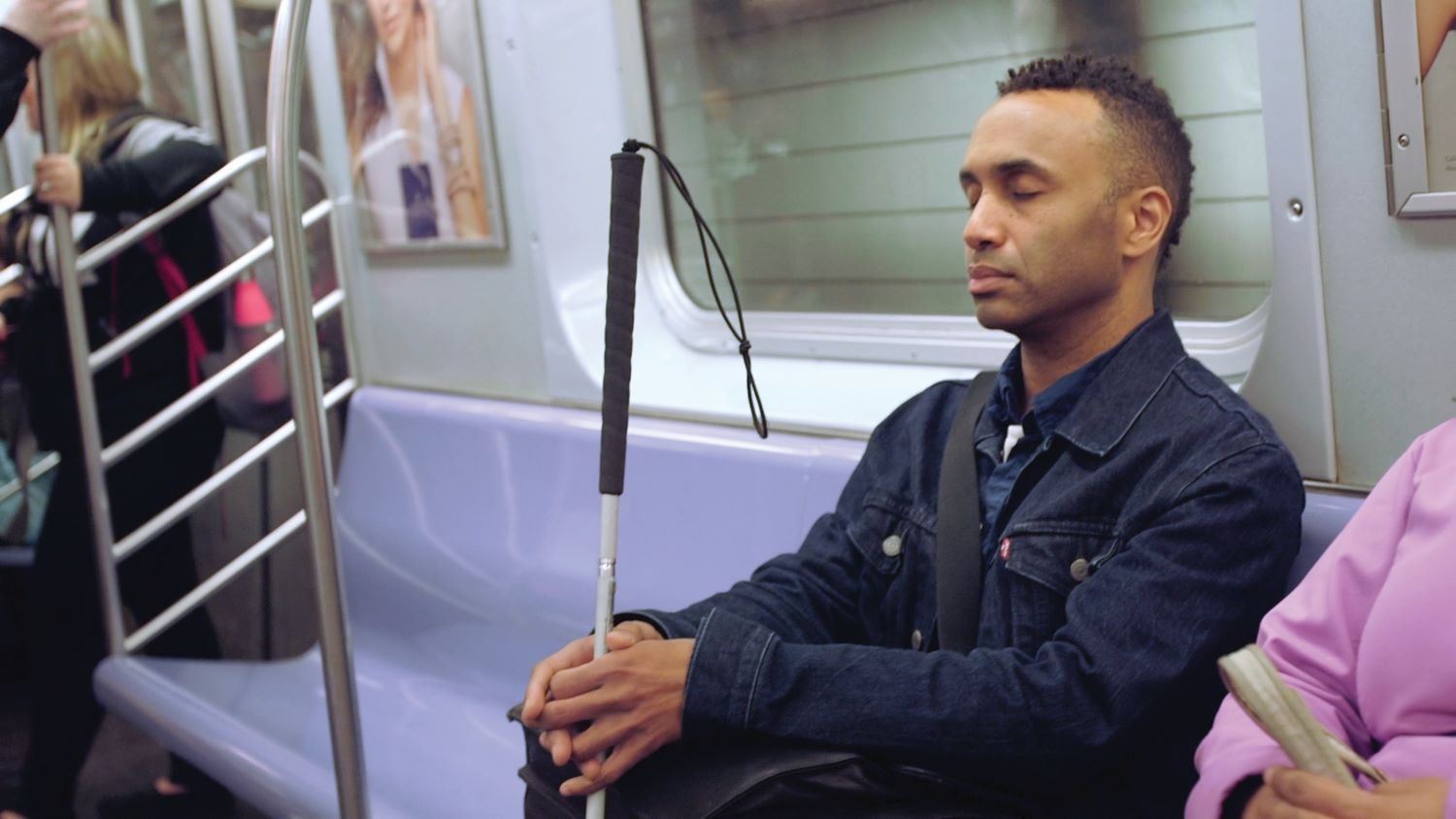
Blindness allows Dugdale to envision and conceptualize the world as he imagines it to be; to him, this is freedom. While Evans appreciates this perspective, he still fears losing the 20 per cent of functional vision he has left, and seeks novel treatments and technology to restore his sight. His own sense of fear and uncertainty about his sight drove him to make Vision Portraits. The film presents three portraits of blind and low-vision artists: a photographer (Dugdale), a dancer, and a writer. Yet, the documentary is primarily Evans’ personal story of gradually losing his eyesight after being diagnosed with a rare disorder called retinitis pigmentosa. While he questions his own future as a filmmaker, he looks to other visually impaired artists to learn how they approach their artistic practice.
Initially, Evans was not going to include himself in the film in such an extensive way, but he realized it felt disingenuous if he didn’t do so. He is familiar with making films inspired by personal matters. Primarily a narrative filmmaker, his first feature Brother to Brother (2004) is a fictionalized account of his coming-out experience in a conservative Jamaican family. He likens appearing on screen for the first time using his white cane—an object that makes his invisible disability visible—to its own form of coming out. As a Black gay man, he also identifies as someone with a disability, risking further marginalization in a highly competitive industry. However, the alternative of pretending to be a seeing person is an exhausting act that can lead to psychological and physical harm.
Evans’ determination to continue his creative work is more than a means to maintain his livelihood or pursue his passion; it is a matter of identity. That’s not to say that having a disability essentially defines who you are, but it does alter and influence one’s point of view. Evans already has developed techniques and practices to continue directing while visually impaired. When working in fiction film, he makes sure there’s always a clear path between him and his actors; he’s a strong verbal communicator, and uses large monitors to help him see what is being captured. In speaking with and observing other artists, Evans is learning the techniques they employ to do their work, but also, and perhaps more importantly, he discovers how they have strengthened their sense of self through developing a point of view that embraces their disability. Renowned feminist filmmaker Bonnie Sherr Klein refused to identify as someone with a disability when she became, for a time, a quadriplegic after suffering a stroke in 1987. “I thought disability was hideous. I couldn’t stand to look in the mirror and see myself,” Klein says while doing her makeup in the opening shot of her National Film Board Film (NFB) film Shameless: The ART of Disability (2006). Over time she was able to learn to speak and walk again through rigorous physiotherapy and brain surgery, but reclaiming her identity as a filmmaker took much longer.
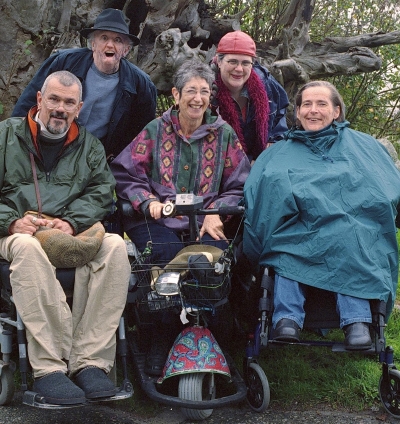
Following her stroke, Klein didn’t want to know or be associated with other people who have disabilities. “I didn’t want to be one of them. I wasn’t like all those broken people,” she remembers thinking. But the most significant turning point in her rehabilitation was meeting other people with disabilities. They became her friends, role models, and educators through whom she found community and involvement in the disability rights movement.
Speaking of the AIDS awareness movement, Derek Jarman reflects in Blue that, “The illness has been co-opted by the well. Awareness is heightened by this, but something else is lost, a sense of reality drowned in theatre.” Whereas Blue evades spectacle by being devoid of images, Klein says that Shameless “grows out of the impulse to correct the images” by having people with disabilities share their own stories since they are so underrepresented and often misrepresented in media.
Shameless is also a portrait of artists and activists, including Klein, who have a diverse range of (dis)abilities. Here, Klein already recognized that she belongs to the community she is filming, though it took her a while to get there. It differs from Vision Portraits, which focuses on one form of disability, as Evans solely sought out visually impaired artists for the purpose of his project.
Whereas Vision Portraits is a personal and observational film about artists with a shared experience, Shameless is a participatory documentary about a community of artists. What has always drawn Klein to filmmaking is its collective and collaborative nature and her belief in its ability to change the world. As a result, the subjects in Shameless play a more active role in the creation and development of the film. For example, early in the doc there is a scene where Klein and her friends, who are the subjects of the film, brainstorm movie titles, reflecting her democratic and activist approach to filmmaking. Her efforts to normalize disability through documentary and the arts from the 1980s onwards stem from her immersion in the civil rights and feminist movements of the 1960s and 1970s.
SHAMELESS: The ART of Disability, Bonnie Sherr Klein, provided by the National Film Board of Canada
Around the same time that Klein was involved in the NFB’s activist documentary program Challenge for Change (1967–1980), which produced films to illuminate socio-political issues in communities across Canada, a radical video journalism collective called People’s Video Theater was developing something similar in the United States. In 1971, the collective went to Camp Jened, a hippie summer camp for youth with disabilities down the road from Woodstock, New York. They came with the intent of bringing new video technology to this marginalized community. James LeBrecht, one of the co-directors of the Oscar-nominated documentary Crip Camp (2020), was a camper at Jened the summer that People’s Video Theatre were there, giving him his first foray into filmmaking. This introduction didn’t only take the form of observing filmmakers filming campers; rather, he was given a camera for a couple of hours to film a tour of the camp from his own perspective.
Born with the spinal condition spina bifida, LeBrecht did not know anyone else with a disability growing up until he went to camp. Prior to his experience there, he had grown accustomed to taking on the role of witness and observer of life happening around him. Jened offered him the opportunity to fully experience the joys and blunders of adolescence for the first time.
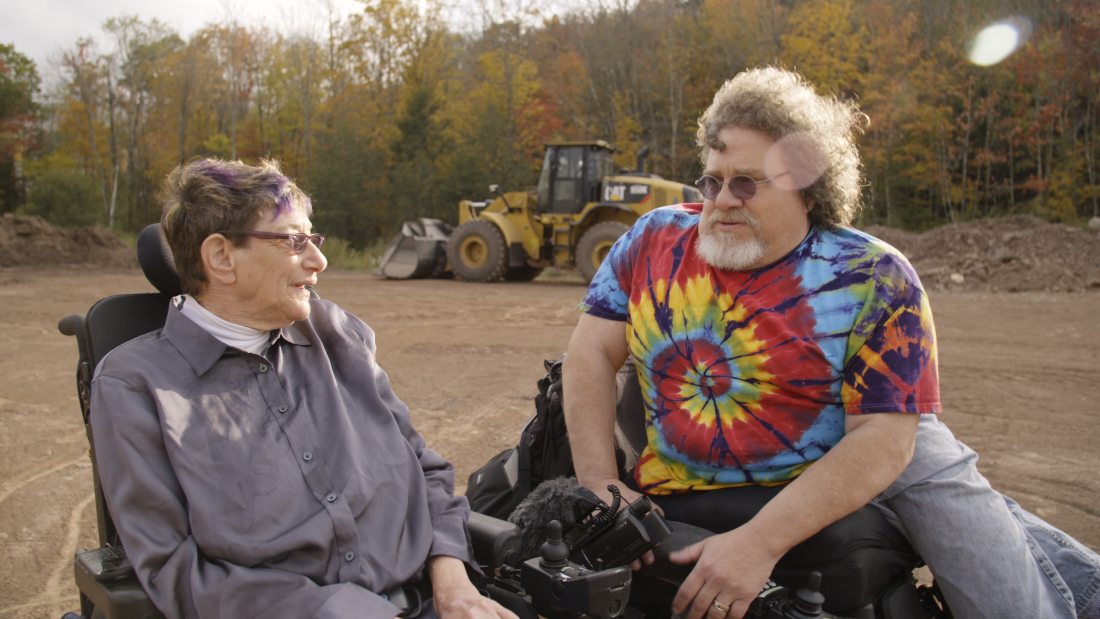
In this environment, LeBrecht and his peers went through a period of self-discovery typical of North American youth. Back home, the process of getting to know oneself had been more challenging for the campers. They had felt excluded from the lives, self-expression, and experiences of other kids their age due to the stigma surrounding disability. At camp they could participate in a democratic process, and for the first time, make decisions for themselves and others about simple matters, like deciding what to have for lunch, or more complicated matters, such as how to deal with a pubic lice infestation. The campers became empowered by claiming responsibility for themselves and each other, an experience that turned many of them, including LeBrecht, into lifelong advocates.
Equipped with a video camera, LeBrecht was transformed into an active participatory observer, now recognized as someone with a point of view. Though the footage he shot technically belonged to the People’s Video Theater, the act of filming gave him agency and ownership of his lived experience.
Despite his success as a sound designer and now a director, LeBrecht still experiences exclusion, even from those who celebrate him. At the Sundance Film Festival where Crip Camp premiered and won the Audience Award, LeBrecht was prevented from attending the Filmmaker’s Lodge due to the inaccessibility of the stage. His co-director, Nicole Newnham, was shocked that these problems were arising in a space they had been invited to, with the programmers knowing the accessibility issues LeBrecht has faced throughout his life and career. That LeBrecht uses a wheelchair should have come as no surprise to those running the festival; yet no one at Sundance had the foresight to see accessibility as a potential barrier for its filmmakers.
In an interview with IndieWire, LeBrecht said, “These film festivals are paying attention for their audiences, but are they paying attention to the filmmakers who come with their films or are going there to network with other filmmakers?” Sundance has since worked with LeBrecht and Newnham to make their screenings and events more accessible; nevertheless, this incident demonstrates just how underrepresented people with disabilities are in the film industry, since LeBrecht was the first one to force a change. LeBrecht values his own point of view, as well that of his community, and demands to be seen and heard, which surely should be understood by festivals and event promoters throughout the world. [This essay was published in print prior to I Didn’t See You There screening at Sundance.]
Watching documentaries by people with disabilities has impressed on me the importance of being seen on your terms, not only to enact social change or spread awareness, but to develop and claim one’s identity and aesthetic. Yet, one of the more jarring psychological effects of losing your vision is the feeling that you are invisible. It’s like putting on a large pair of dark sunglasses that makes you feel anonymous and detached from your surroundings, except you don’t have the option of taking them off. Like Rodney Evans, I fear the possibility of losing more eyesight, but while listening to Dugdale speak about blindness, I’ve come to recognize that I spend so much energy trying to focus on what I can see that I ignore my other senses and abilities. Unlike Dugdale, I don’t think I need to go totally blind to be free, but I need to open my mind to relying less on sight. Sight is just one faculty of observation.
Observation does not arise simply from seeing something, but by being present and making the connections that are what life, storytelling, and art are all about. Now it seems so obvious that my abilities are not limited to the one I am losing, but just like Evans, Klein, and LeBrecht, it’s unlikely that I would have come to this realization without being exposed to the experiences of other creatives with (dis)abilities. Initially, documentary and film seemed like an unrealistic and challenging career choice due to its emphasis on sight, mobility, and complex equipment. Though those challenges exist, it now seems like the perfect fit when I understand filmmaking as a collaborative form of storytelling made by people with different abilities, working towards a shared vision.




